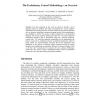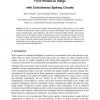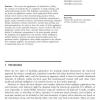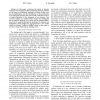97 search results - page 1 / 20 » The Evolutionary Control Methodology: An Overview |
AE
2003
Springer
13 years 9 months ago
2003
Springer
The ideas proposed in this work are aimed to describe a novel approach based on artificial life (alife) environments for on-line adaptive optimisation of dynamical systems. The bas...
EPIA
2003
Springer
13 years 9 months ago
2003
Springer
We give an overview of the EPFL indoor flying project, whose goal is to evolve neural controllers for autonomous, adaptive, indoor micro-flyers. Indoor flight is still a challenge ...
GECCO
2005
Springer
13 years 10 months ago
2005
Springer
This paper proposes an incremental approach for building solutions using evolutionary computation. It presents a simple evolutionary model called a Transition model in which parti...
ALIFE
2006
13 years 4 months ago
2006
We review the applications of artificial life (ALife), the creation of synthetic life on computers to study, simulate, and understand living systems. The definition and features of...
CEC
2009
IEEE
13 years 11 months ago
2009
IEEE
—In this paper we discuss the notion of situated evolution. Our treatment includes positioning situated evolution on the map of evolutionary processes in terms of time- and space...




